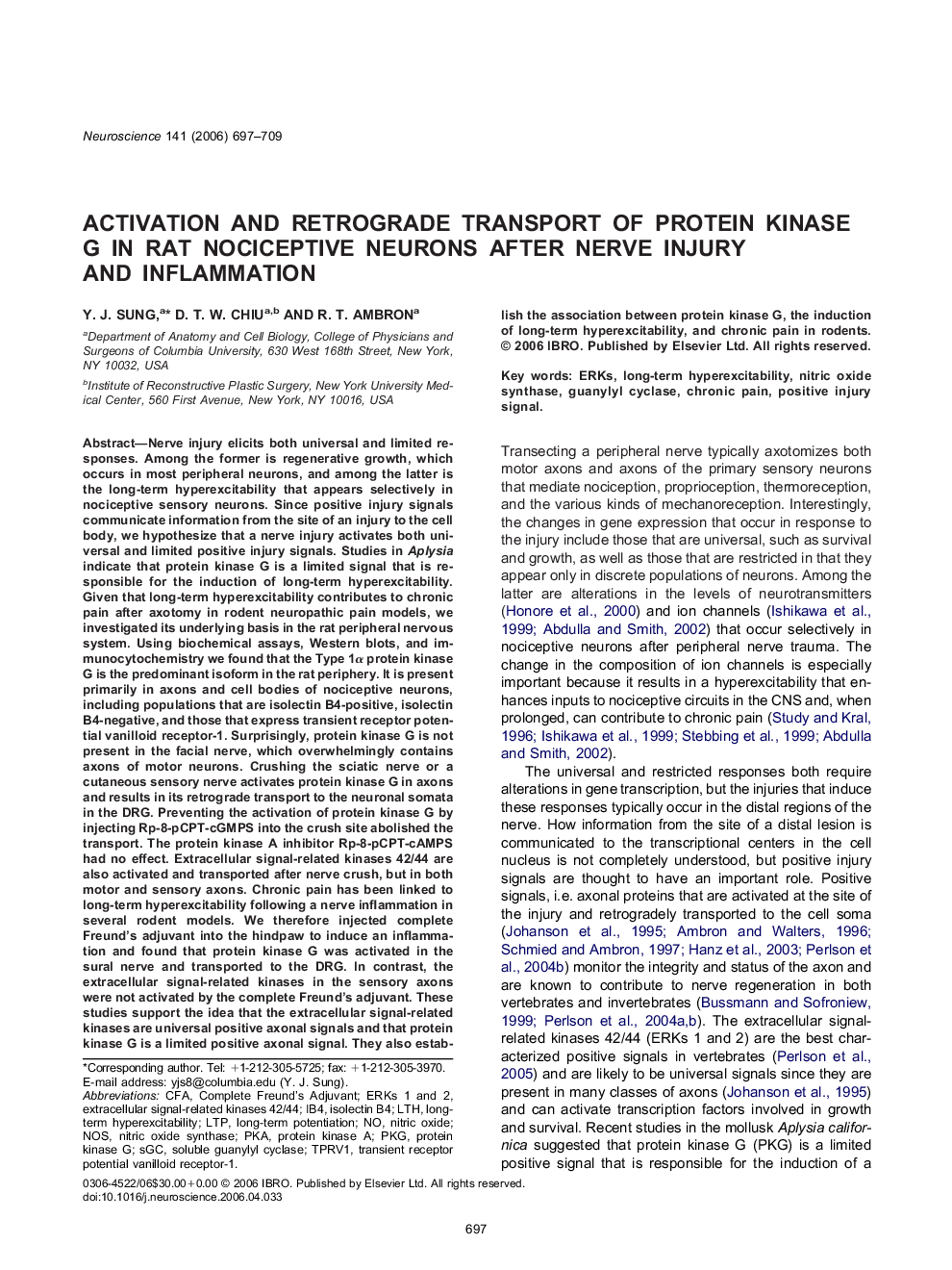| کد مقاله | کد نشریه | سال انتشار | مقاله انگلیسی | نسخه تمام متن |
|---|---|---|---|---|
| 4342764 | 1295892 | 2006 | 13 صفحه PDF | دانلود رایگان |
عنوان انگلیسی مقاله ISI
Activation and retrograde transport of protein kinase G in rat nociceptive neurons after nerve injury and inflammation
دانلود مقاله + سفارش ترجمه
دانلود مقاله ISI انگلیسی
رایگان برای ایرانیان
کلمات کلیدی
CFAtransient receptor potential vanilloid receptor-1NOSSGCPKGLTHpKaIB4complete Freund’s adjuvant - adjuvant دوست کاملERKs - ERK هاisolectin B4 - ایزوکتین B4long-term potentiation - تقویت درازمدتLTP - تقویت طولانی مدت یا LTP Soluble guanylyl cyclase - حلال گویینیل سیکلاسchronic pain - درد مزمنNitric oxide - نیتریک اکسیدnitric oxide synthase - نیتریک اکسید سنتازprotein kinase A - پروتئین کیناز Aprotein kinase G - پروتئین کیناز Gguanylyl cyclase - گویینیل سیکلاس
موضوعات مرتبط
علوم زیستی و بیوفناوری
علم عصب شناسی
علوم اعصاب (عمومی)
پیش نمایش صفحه اول مقاله

چکیده انگلیسی
Nerve injury elicits both universal and limited responses. Among the former is regenerative growth, which occurs in most peripheral neurons, and among the latter is the long-term hyperexcitability that appears selectively in nociceptive sensory neurons. Since positive injury signals communicate information from the site of an injury to the cell body, we hypothesize that a nerve injury activates both universal and limited positive injury signals. Studies in Aplysia indicate that protein kinase G is a limited signal that is responsible for the induction of long-term hyperexcitability. Given that long-term hyperexcitability contributes to chronic pain after axotomy in rodent neuropathic pain models, we investigated its underlying basis in the rat peripheral nervous system. Using biochemical assays, Western blots, and immunocytochemistry we found that the Type 1α protein kinase G is the predominant isoform in the rat periphery. It is present primarily in axons and cell bodies of nociceptive neurons, including populations that are isolectin B4-positive, isolectin B4-negative, and those that express transient receptor potential vanilloid receptor-1. Surprisingly, protein kinase G is not present in the facial nerve, which overwhelmingly contains axons of motor neurons. Crushing the sciatic nerve or a cutaneous sensory nerve activates protein kinase G in axons and results in its retrograde transport to the neuronal somata in the DRG. Preventing the activation of protein kinase G by injecting Rp-8-pCPT-cGMPS into the crush site abolished the transport. The protein kinase A inhibitor Rp-8-pCPT-cAMPS had no effect. Extracellular signal-related kinases 42/44 are also activated and transported after nerve crush, but in both motor and sensory axons. Chronic pain has been linked to long-term hyperexcitability following a nerve inflammation in several rodent models. We therefore injected complete Freund's adjuvant into the hindpaw to induce an inflammation and found that protein kinase G was activated in the sural nerve and transported to the DRG. In contrast, the extracellular signal-related kinases in the sensory axons were not activated by the complete Freund's adjuvant. These studies support the idea that the extracellular signal-related kinases are universal positive axonal signals and that protein kinase G is a limited positive axonal signal. They also establish the association between protein kinase G, the induction of long-term hyperexcitability, and chronic pain in rodents.
ناشر
Database: Elsevier - ScienceDirect (ساینس دایرکت)
Journal: Neuroscience - Volume 141, Issue 2, 2006, Pages 697-709
Journal: Neuroscience - Volume 141, Issue 2, 2006, Pages 697-709
نویسندگان
Y.J. Sung, D.T.W. Chiu, R.T. Ambron,